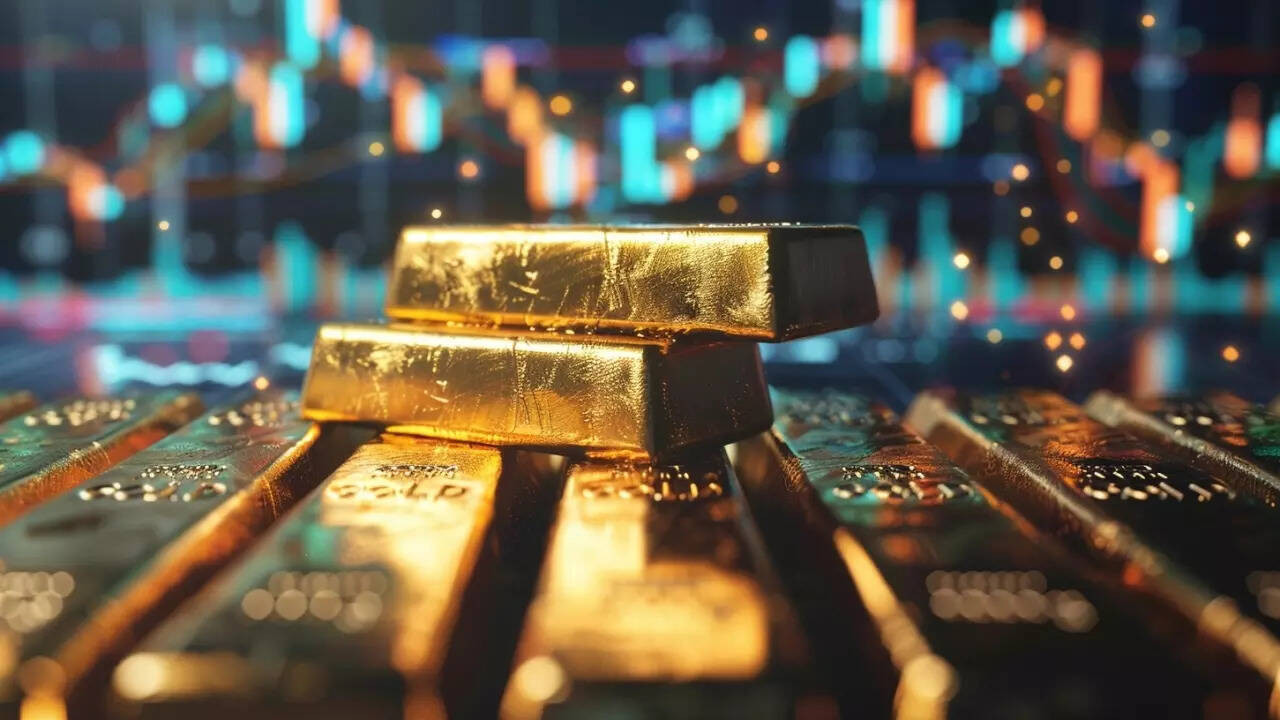Gold and silver price prediction: MCX Gold is resuming its upward trend, potentially reaching 98,000, supported by geopolitical tensions and inflationary concerns. MCX Silver exhibits strong bullish momentum, targeting 1,01,800, driven by robust demand and macroeconomic uncertainties.
Is Gold Still Glittering? A (Fairly) Unbiased Look at What’s Happening
Okay, let’s talk gold. Shiny, valuable, and perennially fascinating. It’s been the backdrop of countless civilizations, the target of daring heists, and a safe haven for investors during, well, pretty much every global hiccup imaginable. And right now, a lot of people are asking: Is it still a smart place to park your money?
The market’s been a bit of a rollercoaster lately, hasn’t it? We’ve seen geopolitical tensions simmering, inflation doing its dance, and interest rates playing a game of limbo. All these factors throw sparks into the gold market, sending prices zigging and zagging.
So, what’s the inside scoop for the near future, let’s say around May 2025? It’s impossible to give a crystal-ball-guaranteed prediction, but let’s break down the forces at play and see if we can get a clearer picture.
The Inflation Equation:
Inflation. That buzzword that’s been haunting our wallets and news feeds for months. When the cost of everything else goes up, gold often gets a boost. It’s seen as a store of value, a way to protect your purchasing power when your currency is feeling a little weak. However, it isn’t always that simple. If central banks aggressively raise interest rates to combat inflation (as they’ve been doing), it can actually make gold less attractive. Higher interest rates mean investors can get a better return from other assets, like bonds, reducing the appeal of gold which, let’s face it, doesn’t exactly pay dividends.
Geopolitics: The Undpredictable Wild Card:
Then there’s the geopolitical situation. Let’s just say the world isn’t exactly a picture of serenity right now. When global anxieties rise due to conflict, political instability, or even just heightened uncertainty, people tend to flock to safe havens, and gold is often at the top of that list. This increased demand can then push prices up.
So, if the world continues its current trajectory of… let’s call it “dynamic instability,” gold might continue to benefit. But again, it’s a complex relationship. Geopolitical events can also trigger economic downturns, which can have unpredictable effects on the market.
The Dollar’s Dance:
The strength of the US dollar also has a big influence on gold prices. They tend to have an inverse relationship. A strong dollar typically makes gold less attractive to buyers using other currencies because it becomes more expensive for them to purchase. Conversely, a weaker dollar can make gold more appealing. Keeping an eye on the dollar’s performance on the global stage will provide valuable clues about gold’s potential trajectory.
Silver’s Shadow (and a Quick Word on Silver):
While gold gets all the headlines, let’s not forget about silver. It often moves in tandem with gold, but it’s also influenced by industrial demand. Silver is used in everything from electronics to solar panels, so its price can be impacted by economic growth and technological advancements. If the global economy picks up steam, silver could see a boost. Think of silver as gold’s slightly more volatile, industrially-inclined cousin.
So, Should You Buy, Sell, or Hold?
Okay, the million-dollar question (or perhaps the million-gram-of-gold question). The honest answer? It depends on your personal circumstances, risk tolerance, and investment goals.
If you’re looking for a quick buck, gold might not be the best bet. It’s generally considered a long-term investment, a way to preserve wealth rather than generate massive returns overnight.
However, if you’re concerned about inflation, global uncertainty, or the long-term stability of your portfolio, gold can be a valuable asset to consider. Diversification is key, and gold can act as a hedge against other investments that might be more vulnerable to economic downturns.
My (Slightly Biased) Take:
Personally, I’m a believer in having some exposure to gold in a well-diversified portfolio. I don’t think you should bet the farm on it, but a small allocation can provide a sense of security and stability in uncertain times. I think it’s always wise to have a few ‘safe bet’ investments to protect you from those times when the market is performing badly.
Before you make any decisions, here’s my advice:
* Do your research: Don’t just take my word for it (or anyone else’s, for that matter). Read up on the factors influencing gold prices, follow market trends, and understand the risks involved.
* Talk to a financial advisor: A qualified professional can help you assess your individual needs and create a strategy that’s right for you.
* Consider your risk tolerance: Gold prices can be volatile, so make sure you’re comfortable with the potential for ups and downs.
* Don’t put all your eggs in one basket: Diversification is crucial. Spread your investments across different asset classes to reduce your overall risk.
The gold market is a fascinating and dynamic beast. It’s influenced by a complex interplay of economic, political, and social factors. While predicting the future is impossible, by understanding these forces, you can make more informed decisions about whether gold is right for you.
Ultimately, the decision of whether to buy, sell, or hold gold is a personal one. Weigh the factors, consider your own circumstances, and make a choice that aligns with your long-term financial goals. And remember, don’t be afraid to ask for help. Professional advice can be invaluable in navigating the complex world of investing.
📬 Stay informed — follow us for more insightful updates!







